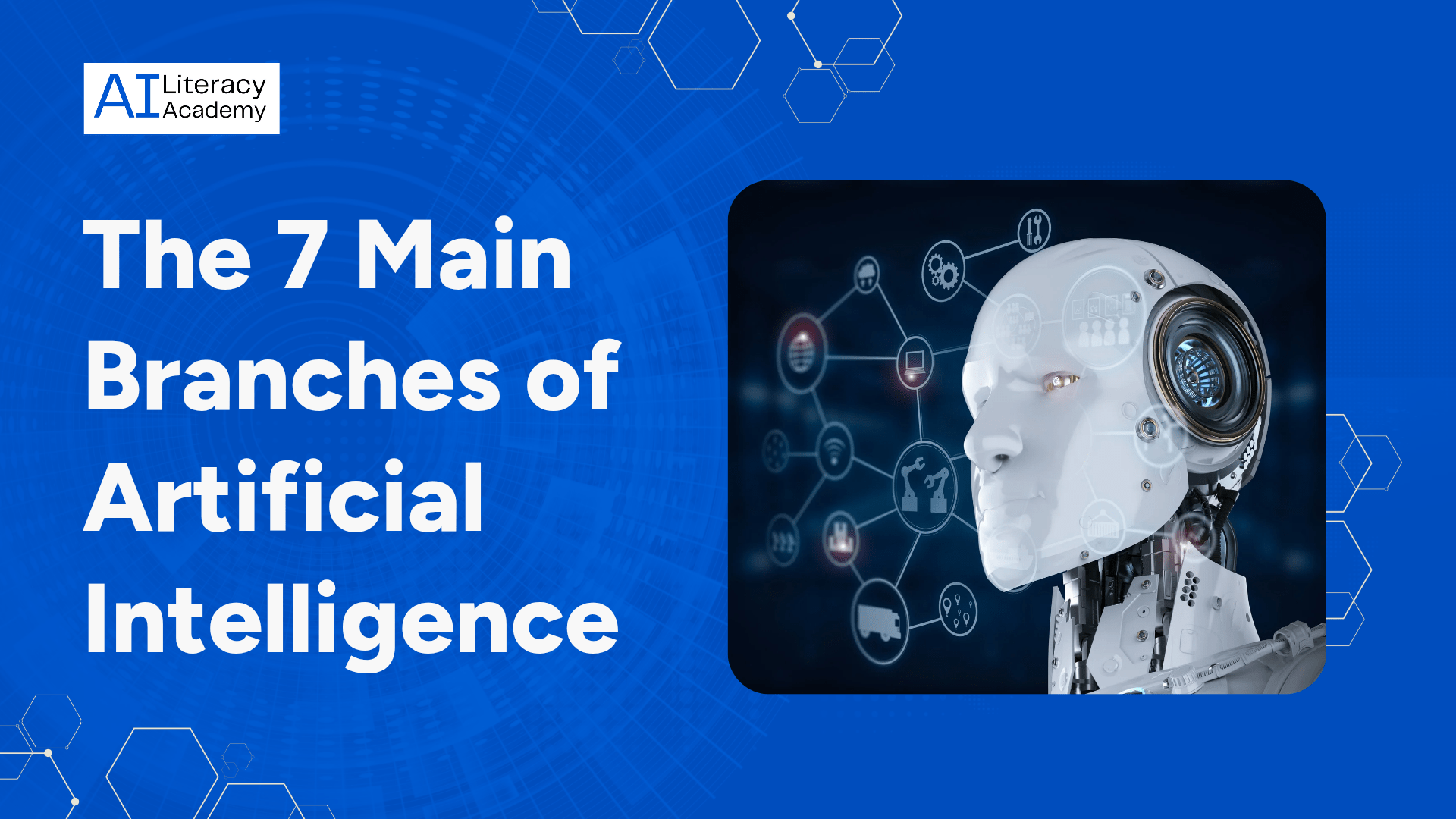Artificial Intelligence isn’t one single technology. It’s an ecosystem of digital minds that think, learn, and evolve in different ways.
If you want to use AI effectively, whether in business, freelancing, or research, understanding its seven main branches gives you the blueprint.
Each branch represents a different form of intelligence. Together, they explain almost every smart system you’ve encountered, from voice assistants to autonomous vehicles.
1. Machine Learning (ML)
Machine learning is the backbone of modern AI. It allows computers to learn patterns from data and make predictions without explicit instructions.
When you see Netflix recommending shows or your inbox sorting emails automatically, that’s machine learning recognizing patterns between actions and results, and improving as it receives more data.
What this means for you:
Machine learning helps automate decisions that once took hours. For businesses, it drives forecasting and trend analysis. For professionals, it powers productivity tools that adapt to your behavior and save time.
2. Deep Learning
Deep learning is a specialized form of machine learning that uses artificial neural networks, multiple layers of algorithms inspired by the human brain. It’s what gives AI the ability to recognize speech, detect objects, and analyze complex images.
When you unlock your phone with facial recognition or use voice search, deep learning is quietly powering those actions.
What this means for you:
Deep learning enables AI to process unstructured data like audio, text, and visuals. It drives generative tools, recommendation systems, and healthcare diagnostics that continuously refine themselves as they learn from real-world data.
Deep learning evolved from traditional machine learning, and it’s how AI went from identifying patterns to understanding context.
3. Natural Language Processing (NLP)
NLP is the branch that allows machines to understand and communicate with human language. It combines linguistics, computer science, and machine learning to interpret meaning, tone, and intent.
Every time you use ChatGPT, Grammarly, or Google Translate, NLP is the engine making sense of your words.
What this means for you:
NLP makes professional communication faster and more precise. It powers AI writing tools, multilingual assistants, and customer service systems that respond naturally rather than mechanically.
4. Expert Systems
Before the deep learning era, expert systems led the AI field. They use predefined rules and expert knowledge to solve problems in specific domains such as law, finance, or medicine.
Think of them as digital advisors that replicate human expertise rather than learning from data.
What this means for you:
Expert systems are still essential where consistency matters more than flexibility, such as compliance checks, risk assessments, and standardized decision frameworks.
5. Computer Vision
Computer vision enables machines to interpret and understand visual information. It combines image recognition, neural networks, and pattern detection to help AI “see.”
From quality control in factories to self-driving cars recognizing traffic signs, computer vision turns pixels into insight.
What this means for you:
Computer vision expands what AI can perceive. In healthcare, it identifies early signs of disease. In retail, it tracks inventory visually. It brings clarity to operations where seeing accurately is as valuable as thinking intelligently.
6. Robotics
Robotics merges AI with physical movement. It applies algorithms to real-world mechanics so machines can act autonomously or assist humans safely.
From warehouse robots that optimize logistics to surgical systems that operate with sub-millimeter precision, robotics brings AI’s intelligence into motion.
What this means for you:
Robotics extends human capability. It improves safety, productivity, and access, whether through automated delivery systems or domestic robots that simplify daily life.
7. Reinforcement Learning
Reinforcement learning teaches AI through experience. Instead of being told the right answers, the system learns by trial and feedback, receiving rewards for correct decisions and penalties for mistakes.
It’s the approach used in self-driving cars, trading algorithms, and even games like AlphaGo that outperformed world champions.
What this means for you:
Reinforcement learning enables adaptive intelligence, systems that continuously refine strategies over time. It’s the foundation of AI that learns like a human, improving through repetition and response.
How These Branches Work Together
These seven branches don’t compete, they collaborate.
A single AI system might use computer vision to see, machine learning to recognize patterns, and expert systems to make recommendations. Together, they create the kind of intelligence that adapts, learns, and acts with purpose.
If you want to understand how these branches interact in real-world systems, explore our blog How AI Works: Strengths, Limitations, and How to Use It Effectively for a complete picture of how AI processes information.
And if you’d like to learn how these intelligent systems make decisions, read 7 Key Types of AI Agents (and How Each of Them Works). It reveals how these branches power agents that think, adapt, and create.
Understanding these seven branches gives you more than definitions. It gives you perspective, the ability to recognize where intelligence lives in every tool you use, and how to work with it effectively.
